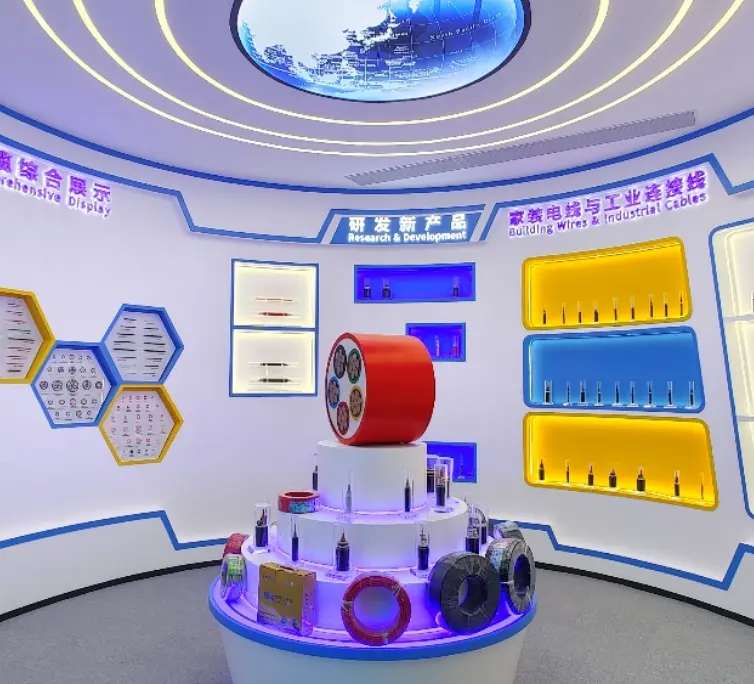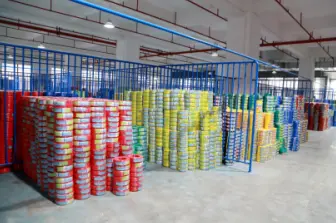Comparison and Analysis of Rigid and Flexible Control Cables in Fire Protection Distribution
In the fire protection power distribution system, mineral insulated cables play a vital role due to their unique inorganic composition and excellent fire performance. Guangdong Jinlianyu Cable Industrial Co., Ltd., as a leader in the cable industry, is committed to providing customers with safe and reliable cable solutions. This article will delve into the comparison between rigid and flexible control cables in fire protection power distribution systems to help users better choose the cable type that suits their needs.
Characteristics and Applications of Rigid Insulated Cables
Rigid insulated cables, composed of inorganic materials like copper and magnesium oxide, exhibit remarkable features such as fire resistance, explosion resistance, smokelessness, and non-toxicity. The seamless copper tube sheath and tightly compacted magnesium oxide powder insulation layer enable the cable to maintain stable operation under extreme conditions. Additionally, the rigid cable is highly resistant to corrosion and has a service life of up to hundreds of years. The copper sheath can also be used as a grounding wire, greatly simplifying the grounding system.
Due to its excellent safety performance, rigid mineral insulated cable is widely used in nuclear power plants, metallurgy, chemical industries, mines, high-rise buildings, airports, subways, and other places with high safety requirements. In the fire protection power distribution system, it ensures the power supply to key equipment such as fire pumps, fire elevators, important loads, emergency evacuation indicators, and smoke control systems during a fire, providing valuable time for personnel evacuation and firefighting.
Characteristics and Applications of Flexible Control Cables
Flexible control cables have rapidly developed in recent years due to their soft and easy-to-install characteristics. These cables use synthetic mica tape as insulation material, with a copper sheath longitudinally welded and embossed, enhancing the cable's flexibility and mechanical strength. Flexible control cables also offer advantages like fire resistance, high current carrying capacity, impact voltage resistance, corrosion resistance, and being halogen-free and non-toxic, with relatively low installation costs. Their voltage resistance level can reach 1000V, effectively reducing the impact voltage caused by the frequent start-up of inductive or variable frequency electrical devices, thereby extending the service life of the circuit system. Furthermore, flexible control cables can be manufactured with multiple cores, up to 96 cores, covering various specifications such as power cables and control cables.
Flexible control cables are also widely used in fire protection power distribution systems, especially in places requiring flexible wiring and space-saving, such as super high-rise buildings, commercial complexes, hospitals, and schools. During a fire, flexible control cables can maintain normal operation for a certain period under high temperature or even flames, providing electrical support for personnel evacuation and firefighting. Additionally, in the fields of new energy (e.g., wind power, solar power), data centers, communication networks, and high-temperature, flammable, and explosive environments like petrochemical and steel smelting, the application of flexible control cables is increasing.
Comparison of Rigid and Flexible Control Cables in Fire Protection Power Distribution
Safety Performance: Rigid mineral insulated cables exhibit higher fire, explosion, and water resistance due to their inorganic composition and seamless copper tube sheath. Under extreme fire conditions, rigid cables can maintain circuit integrity, providing continuous power to fire protection equipment. While flexible control cables also have excellent fire performance, their insulation layer and sheath may be damaged under certain extreme conditions (e.g., prolonged high-temperature exposure, heavy impact), affecting circuit integrity.
Installation and Laying: Flexible control cables, with their soft and easy-to-install characteristics, significantly reduce installation costs and time. They can be laid on cable trays with ordinary cables, using open laying brackets, making them more flexible and convenient. In contrast, rigid cables, due to their rigidity and weight, require more brackets and fixtures during installation, and the laying path is limited.
Service Life and Maintenance: Rigid mineral insulated cables have strong corrosion resistance and a service life of up to hundreds of years. The copper sheath can be used as a grounding wire, simplifying the grounding system. Conversely, although flexible control cables also have high corrosion resistance and a long service life, their insulation performance and mechanical strength may gradually decline in long-term high-temperature, humid or chemical corrosion environments.
In summary, rigid and flexible control cables each have their advantages and disadvantages in fire protection power distribution systems. Rigid cables, with their excellent safety performance, long life, and simplified grounding system, are more suitable for places with extremely high safety requirements; while flexible control cables, with their softness, ease of installation, and lower installation costs, show greater advantages in places requiring flexible wiring and space-saving.
In practical applications, selecting the appropriate cable type is crucial for ensuring the safe and reliable operation of the fire protection power distribution system. Therefore, we provide comprehensive technical support and customized solutions to help customers choose the most suitable cable type based on specific needs and conditions. Whether rigid mineral insulated cables or flexible control cables, Jenuin Cable will ensure safe electricity use with excellent quality and service.
Latest News & Blog
 English
English  français
français  Deutsch
Deutsch  العربية
العربية  tiếng việt
tiếng việt  ไทย
ไทย  čeština
čeština  Indonesia
Indonesia  Eesti
Eesti  български
български  slovenčina
slovenčina 



